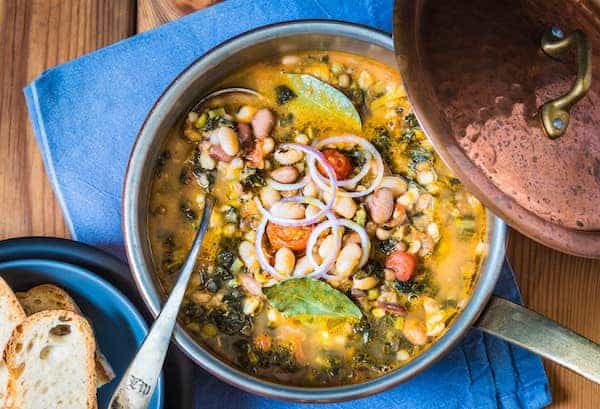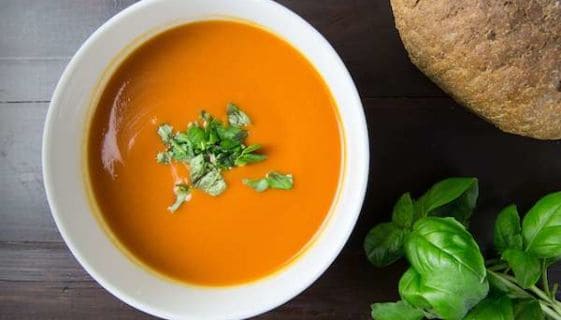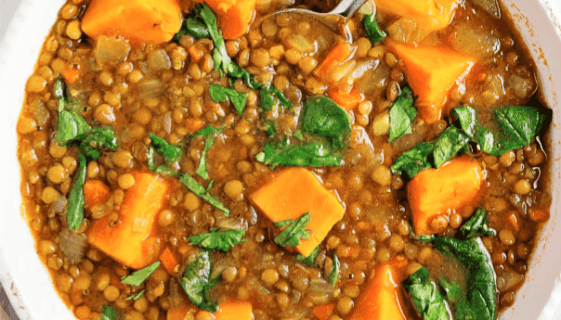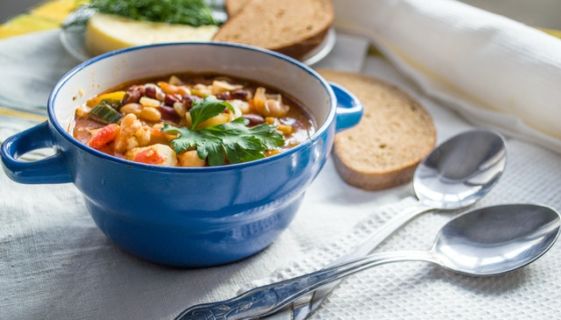Our white bean and tomato stew is a hearty, healthy, and delicious dish perfect for anytime of year. It's savory and comforting for chilly months, as well as fresh and bright for summer days. This white bean and tomato stew recipe showcases the tender sweetness of tomatoes and the creaminess of beans giving way to an irresistible flavor combination.
This dish delivers on flavor and texture--and the cooked tomatoes provide our bodies with lycopene, a powerful antioxidant that has been shown to help reduce our risk for certain cancers. The beans are an excellent plant-based protein source that provides a substantial amount of fiber to help us feel satisfied longer and boost up the efficiency of our digestion. The addition of vibrant herbs, garlic and citrus deepens the richness and complexity of flavors but also supplies immune boosting, inflammation reducing and free radical fighting properties making this stew a flavorful way to enjoy a nourishing dish.
Serves: 2
Ingredients
- 2 tablespoons high heat oil (avocado, grapeseed)
- 1/2 medium onion, diced
- 5-6 roma or plum tomatoes, diced (if tomatoes are not in season you can use bpa free canned or preferable glass jarred)
- 1 (15 oz) jar or pouch of white beans (cannellini or great northern), drained and rinsed
- 3 garlic cloves, minced
- 2 rosemary sprigs
- 1 ½ cups vegetable stock
- 1 teaspoon salt
- ½ teaspoon black pepper
- 1 bunch of chard, chopped
- Fresh chopped parsley and lemon zest to garnish
Directions
- Chop garlic and onions and leave on a cutting board for 10-15 minutes.
- Heat oil in a medium pot over medium heat. Add onions and cook for 5 minutes until translucent and beginning to brown.
- Add diced tomatoes and cook for another 4-5 minutes, stirring frequently to cook evenly.
- Add the beans, garlic and rosemary and cook for 1-2 more minutes until garlic becomes fragrant.
- Add the stock, salt and pepper and bring mixture to a boil.
- Reduce to a simmer and add the chard. Cook at a simmer for 10-15 minutes to allow all of the flavors to come together.
- Serve with fresh parsley and lemon zest.
Nutrition Highlights
Tomatoes: A great source of lycopene that helps reduce the risk of cancer and heart disease and protect skin integrity. Cooking tomatoes in a healthy fat increases the amount of available lycopene that the body will absorb.
Beans: Areas around the world that have been identified as places where humans live the longest (Blue Zones), are places where chickpeas are commonly found in the diet. These versatile and affordable beans contain folate, fiber, iron, phosphorus and healthy fats. Their high amounts of soluble fiber and plant sterol support a healthy gut microbiome. Beans increase feelings of satiety and have been associated with a decreased risk of heart disease.
Garlic and Onions: Considered a prebiotic, meaning it feeds the “good” bacteria in our gut and promotes a healthy digestive system. Research supports that the compounds such as allicin in garlic and onions have antioxidant, anti-inflammatory, antimicrobial, and cardioprotective properties.
Leafy Greens: Greens such as kale, spinach, collards, mustard greens, arugula, and chard have been shown to protect bones from osteoporosis, reduce inflammation, support a healthy gut, strengthen the immune system, protect cognition and supply a high amount of antioxidants. They are considered to be among some of the best cancer-preventing foods.
Rosemary and Parsley: Herbs rich in nutrients such as Vitamins A, C, and K, and is packed full of antioxidants that help reduce oxidative stress in the body. Such antioxidants are lutein, beta carotene, and zeaxanthin which not only are known to reduce the risk of cancer, but also can prevent age-related macular degeneration and support liver health.
Citrus juice and zest: Packed full of a multitude of nutrients such as vitamin C, flavonoids, and fiber which aid in vascular protection, reduce inflammation, improve gastrointestinal function and health, and play an important role in preventing diabetes, cancer, neurological disease. The vitamin C in the lemon juice will aid in the intestinal absorption of the iron in the chard and beans.



 Ananda Kaplan
Ananda Kaplan


